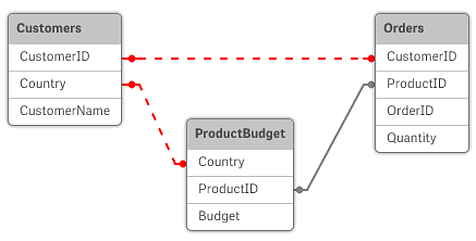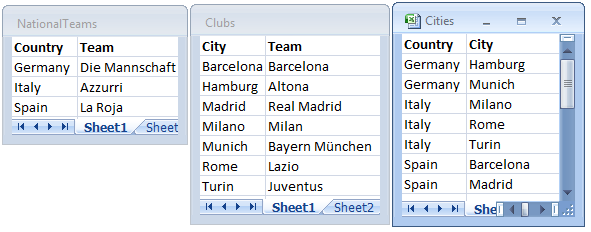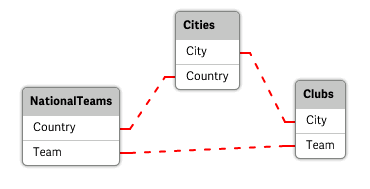If there are circular references ("loops") in a data structure, the tables are associated in such a way that there is more than one path of associations between two fields.
This type of data structure should be avoided as much as possible, since it might lead to ambiguities in the interpretation of data.

Qlik Sense solves the problem of circular references by breaking the loop with a loosely coupled table. When Qlik Sense finds circular data structures while executing the load script, a warning dialog will be shown and one or more tables will be set as loosely coupled. Qlik Sense will typically attempt to loosen the longest table in the loop, as this is often a transaction table, which normally should be the one to loosen. In the data model viewer, loosely-coupled tables are indicated by the red dotted links to other tables.
Example:
Data is loaded from three tables that include the following:
- Names of some national soccer teams
- Soccer clubs in some cities
- Cities of some European countries

This data structure is not very good, since the field name Team is used for two different purposes: national teams and local clubs. The data in the tables creates an impossible logical situation.
When loading the tables into Qlik Sense, Qlik Sense determines which of the data connections that is least important, and loosens this table.
Open the Data model viewer to see how Qlik Sense interprets the relevance of the data connections:

The table with cities and the countries they belong to is now loosely coupled to the table with national teams of different countries and to the table with local clubs of different cities.
